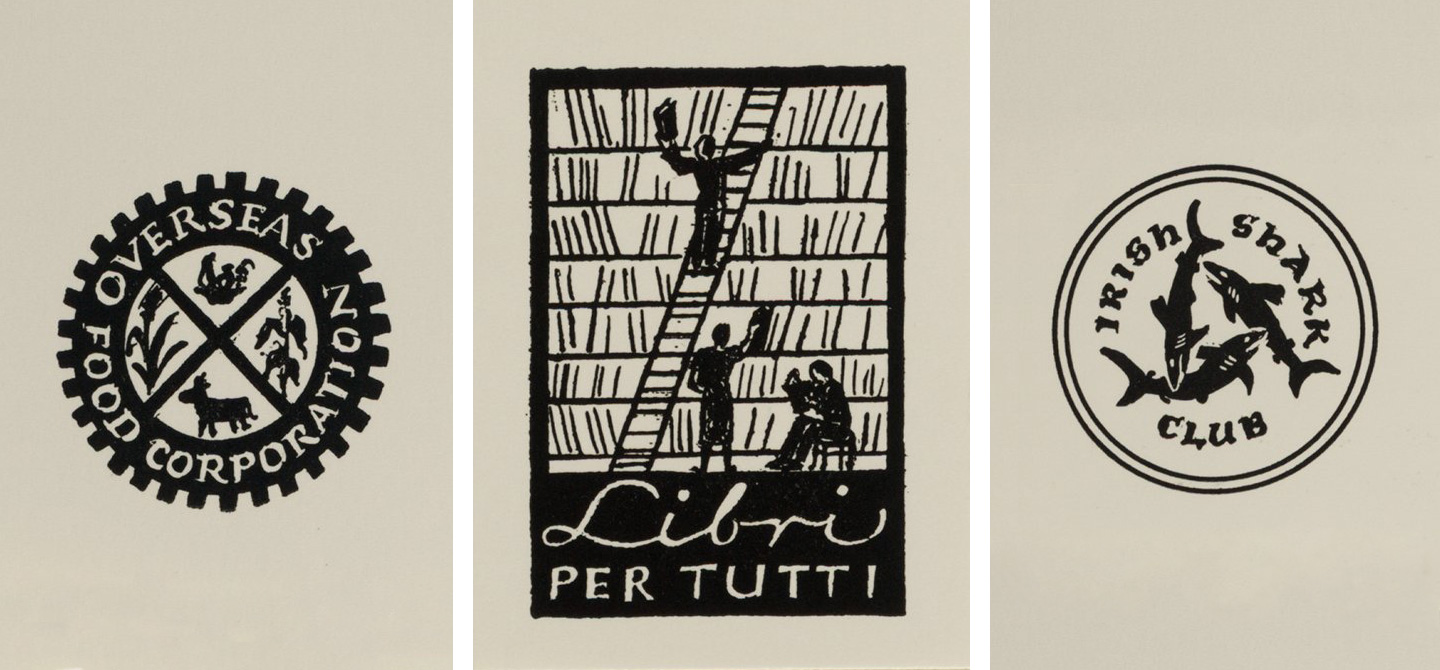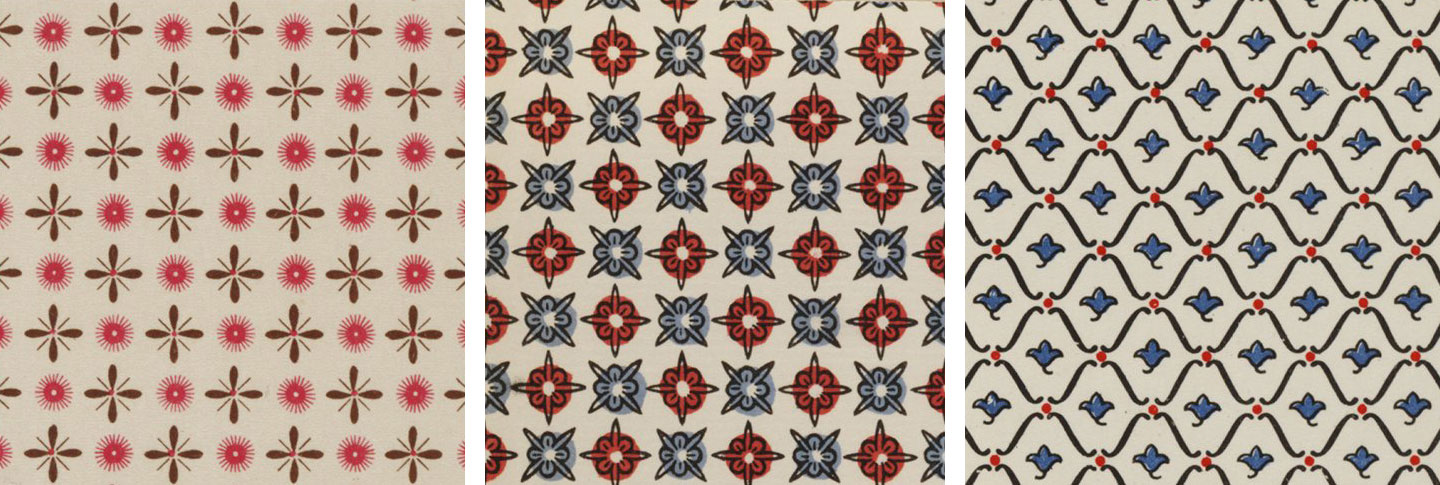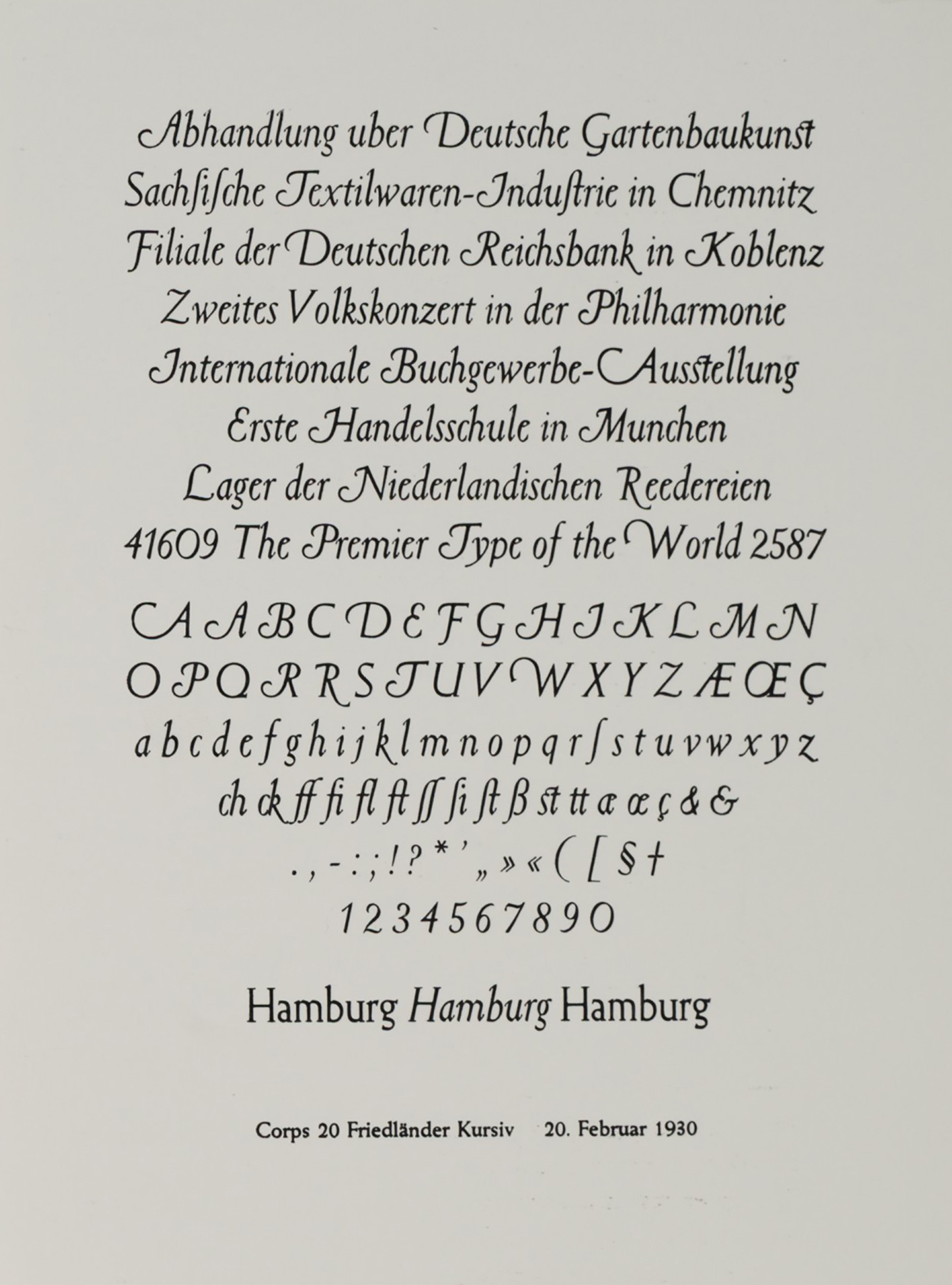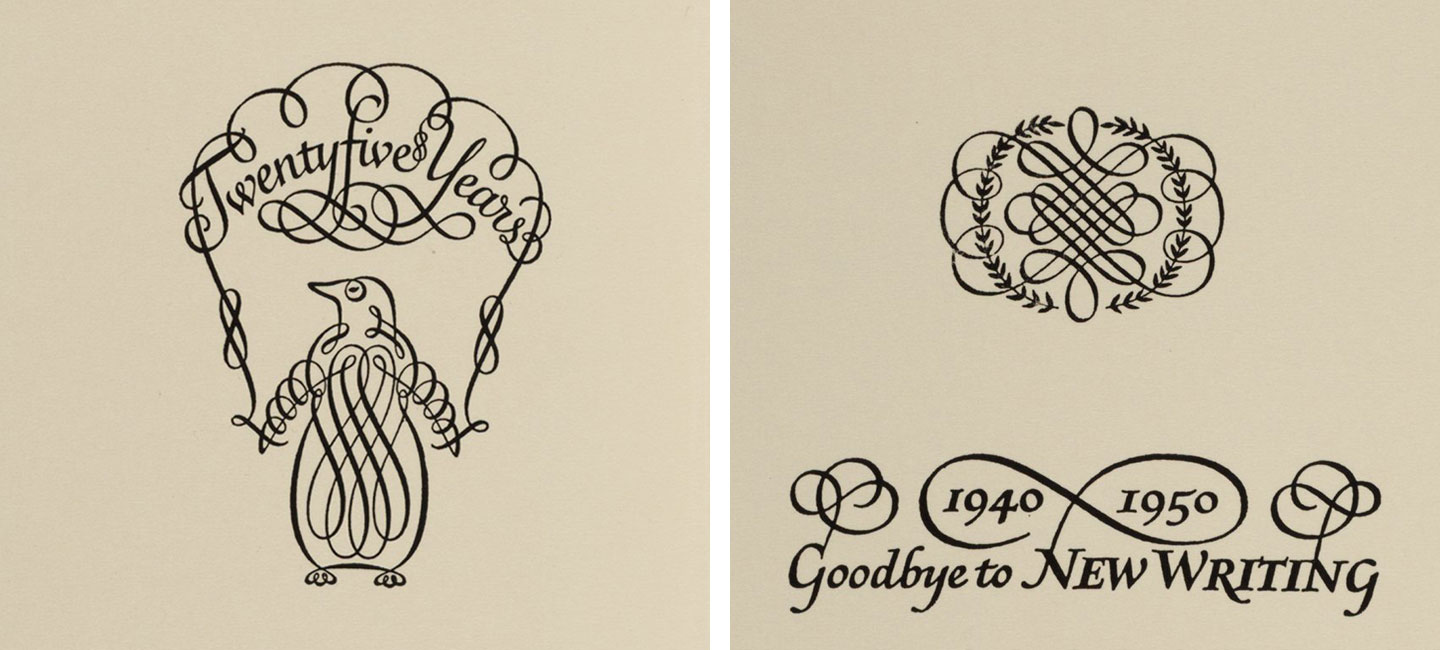I first heard of Elizabeth Friedländer in an article about early female typeface designers. Using some of the typefaces mentioned in the text I decided to prepare a few images for our Instagram account. That personal exercise opened the door to extra information about the names included in the article. There was an exhibition on Elizabeth’s work at the Ditchling Museum (England), and Katharine Meynell had released the film Elizabeth in 2016. While looking for more information about her I also found the book I am writing about today. This book, letterpress printed and bound by hand, was published as a limited edition of 325 copies. A couple of months ago—coinciding with the launch of Women in type—I finally found it online and was able to read it. The University of Victoria Library scanned the pages and made the book available for all.
The book is full of reproductions of her work, not only finished and published projects but also drawings and documentation of her design process. The author tells us about her life’s path, moving from one country to another, and finding ways to nurture her career as a designer. The text includes insightful quotes from personal documents and imagery from the material she carefully preserved, allowing us to know about her work and career through primary sources.

Rough work in Indian ink for different projects
The scope of her work is immense, she had a long career and was a successful designer. Despite all the difficulties in her life, she got recognition from peer designers and she witnessed, at least, two exhibitions on her work (Ben Uri Gallery in London and Boole Library in Cork). It is the University College Cork that holds now part of her historical archive.
She was a designer of many talents, she created book covers, pieces of advertising, pattern papers, calligraphic maps, graphic identities, typographic borders and, nothing less than a typeface for the Bauer Type Foundry.

Allegro (1947), Precious (1950), and Treasure (1946), patterned papers for the Curwen Press

Dated proof from the Bauer Type Foundry using the original name of the typeface
The lack of information about specific personal events in her life is something she may have wanted to keep private. In a reply to a job offer in Germany from 1959, we can read “one simply cannot go back when one left so long ago. Too much has happened in-between and the old homeland has become alien and I have found a home in a new land”. She had left Germany in 1936, after being rejected to join the Professional Union of German Industrial Graphic Designers:
(…) as you are a non-Aryan and as such you lack the necessary reliability and fitness to participate in the creation and dissemination of German cultural values. I, therefore, forbid you to continue to practice your profession as a graphic designer.
She first moved to Italy, shortly after to England, and finally to Ireland. She worked hard to make a name for herself in the design industry, becoming an extraordinary designer. Her work included commissions from companies like Mondadori, Curwen Press, Penguin Books, Linotype, and Monotype.

Calligraphic Penguin and ornamental headings for leaflets and Penguin Progress (1960)
She was indeed a pioneer, a brave and self-confident woman that overcame many barriers to success, a success that was is overlooked and understated. The book is a highly recommended reading, a good source to unveil a historical reference.
New borders: the working life of Elizabeth Friedlander
Paucker, Pauline. Incline Press, England, 1998.
Scanned October 19, 2020. University of Victoria (B.C.). Library
